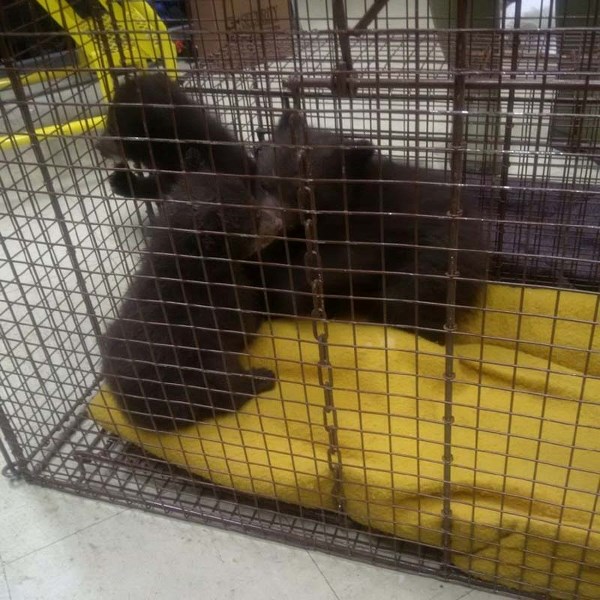Three months after three black bear cubs were found locked in a Banff bathroom and shipped to Ontario for rehabilitation, the Cochrane Ecological Institute is still trying to work with the province to help create temporary permits for animals that are currently prohibited for rehabilitation in the province, including black bears.
“It’s so easy to solve and they won’t do it – it makes no logical sense,” said Clio Smeeton, director of the Cochrane Ecological Institute (CEI).
With more than 10 wildlife species on the list, Smeeton explained the directors of the local rescue and rehabilitation facility have been trying to work with Alberta Environment and Parks staff since the ban was initiated in 2010.
“Species are prohibited for good reason, including the potential spread of disease, impact to survival and population health, as well as potential risks of habituation,” said Brett Wittmeier, press secretary for Alberta Environment and Parks.
The institute sent a 32-page document to Alberta Environment and Parks on May 23, titled Proposed Protocol for Rehabilitation and Release of Orphaned Bear Cubs. The information detailed the rationale for the rescue, rearing and release of orphaned bear cubs in the province. Smeeton also says she is disappointed with all the red tape.
“It’s like a pile of chains they put on for no reason … and there is no appeal process. There is no way to appeal a decision by Alberta Wildlife,” Smeeton said.
“It boils down to why they won’t let people do it? It’s free. It looks good. It doesn’t cost the government anything.”
According to the press secretary for Environment and Parks, officials handle all incidents on a case-by-case basis and are reviewing all protocols for species currently prohibited for rehabilitation.
“This evaluation will take time to get it right. In the meantime, Alberta will consider cases under stringent conditions, including monitoring and safety protocols, to ensure potential risks to public safety can be assessed and properly mitigated,” Wittmeier said.
“We will continue to periodically review these positions.”
But the CEI director wonders what happens to the prohibited species in the meantime that don’t make headlines.
“People phone me up and I have to say, ‘No we can’t take these animals,’” Smeeton said.
The only protocols for prohibited orphaned or injured wildlife Smeeton could find stated: “whenever possible an orphaned carnivore is to be left where it was found or as close as possible to where it was picked up; if this is not possible, the rehabilitation facility is required to contact the district Fish and Wildlife Office to pick up the animal, where the staff will make every effort to place the animal in an authorized facility such as a zoo; and when no facility is available to accept them, animals are euthanized.”
In 2015, it was reported 24 young bears in Alberta had been euthanized since the ban.
Failing to adhere to conditions on the rehabilitation permit – taking in species that are prohibited for rehabilitation – may result in the permit being revoked, according to a letter from Minister Shannon Phillips.
“Right now, I think the world should know how unnecessary and foolish this is,” Smeeton said.
CEI celebrated 50 years of rescuing and rehabilitating injured and orphaned wildlife earlier this year.
FACTBOX
Other species prohibited for rehabilitation in Alberta:
Pronghorn (kids)*
Elk (calves)*
Bighorn sheep
Mountain goat
Grizzly bear
Black bear
Wolf
Coyote
Raccoon
Lynx*
Bobcat*
Cougar kittens
Bat species*
Amphibians (except leopard frogs)*
*NOTE – there are exceptions for the species with an asterisk* at the end of the name, under strict protocols developed by the AEP Wildlife Management Policy department, but protocols documents for these species have not been developed yet.




